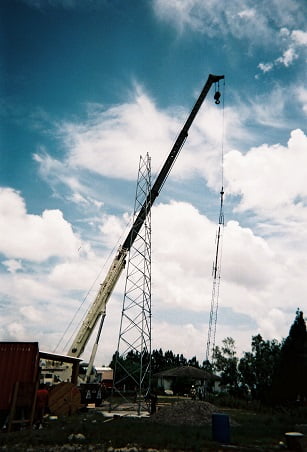LPFM Guide in Radio-Guide Magazine
 Many have asked what’s up with LPFM radio. Here is a bit of a recap on what’s transpired this year for the LPFM service. Many new positive rule changes are on the books now and we have a confirmed two week filing window for later this year.
Many have asked what’s up with LPFM radio. Here is a bit of a recap on what’s transpired this year for the LPFM service. Many new positive rule changes are on the books now and we have a confirmed two week filing window for later this year.
Second Adjacent Waivers Creates More Availabilities – Maybe
One major change in the rules is the use of second adjacent waivers. These are available to those areas that don’t have any fully spaced channels. Keeping in mind that though a second adjacent might be available, they must be backed up by solid engineering studies that prove the calculated interference zone will not affect any listeners to the affected existing second adjacent facility. Some are fairly simple, once you have calculated the interference zone. If inside that zone, there are no buildings or four lane highways, it would likely be a grantable waiver. However, usually where a second adjacent waiver is needed would be in highly populated areas. So that kills most attempts at siting these stations using this method.
Second Adjacent Second Chance
If the basic second adjacent waiver process just won’t work, the second option would be to utilize a directional antenna and height, to pull up the radiation center towards the horizon, off the ground, and away from potential listeners inside the interference zone and near the proposed tower. This can get a bit tricky however. This is a time consuming process and is much more complicated than even a full-powered application. An applicant for a second adjacent frequency will need specialized software and experience handling these kinds of studies. This is not something they will be putting together utilizing Google maps as the Commission suggested a few months ago. I must note here that directional antennas are only allowed for second adjacent waivers, and only where needed to clear the interference zone.
Bye Bye Third Adjacent
Protection for existing stations on the third adjacent frequency is no longer considered. No waiver is required for a station application located three channels away from the proposed application frequency.
LPFM Far Far Away
 Other changes include the maximum distance that board members may be from the proposed transmitter site. Previously that was ten miles. Now that can be as much as twenty miles if the application is located outside of the top fifty markets. Many times a rural LPFM will have board members living more than ten miles from the site, this new rule change will be very helpful to rural applicants.
Other changes include the maximum distance that board members may be from the proposed transmitter site. Previously that was ten miles. Now that can be as much as twenty miles if the application is located outside of the top fifty markets. Many times a rural LPFM will have board members living more than ten miles from the site, this new rule change will be very helpful to rural applicants.
We Need More Time – You Got It! New LPFM construction permits will be good for up to eighteen months initially. If the CP holder is unable to build within eighteen months, an extension is now available for an additional eighteen months. Extensions should be requested no less than three months from the expiration date to allow sufficient time for the Commission to process the request.
Once the station is built and on the air, the station cannot be transferred to another entity for three years. The Commission put this restriction in place to discourage speculators from snatching up LPFM frequencies from serious applicants.
Hasta La Vista LP10
The Commission abandoned the LP10 – 10 Watt version of LPFM. A filing window was never opened for this service. It died on the vine so to speak. There are still some rumblings from an attorney who has been pressing the FCC to allow stations in the 10-50 Watt range. So far it appears to be landing on deaf ears. And rightly so, as the current service allows licensing as low as 50 Watts already. The noise floor of the FM band is such that anything less than 50 Watts is really useless anyway, especially in metro areas where they claim this wattage is necessary to squeeze in more stations. The reality is that lowering from 50 Watts to say 10 Watts doesn’t really create many more availabilities in metro areas. And many metro LPFM stations are already complaining about the noise floor even with 100 Watts.
More Power to LPFM
 There is a proposal coming to increase the maximum power of an LPFM station to 250 Watts. The FCC has taken that possibility seriously and positive comments from the Commission have been noted.
There is a proposal coming to increase the maximum power of an LPFM station to 250 Watts. The FCC has taken that possibility seriously and positive comments from the Commission have been noted.
That change will likely occur in 2014 where existing LPFM licensees may have the opportunity to upgrade to 250 Watts. Of course an engineering study would be needed to prove the upgrade would not interfere with existing stations. However, with the buffer zone on these existing LPFM stations, there is a good possibility many will qualify.
Even More Power to LPFM
One exciting change for LPFM licensees is the ability to own up to two 250 Watt translators to extend their coverage. Previously an LPFM licensee could not own any other licensed broadcast properties, so this is a major thing for the LPFM service. An LPFM could be rebroadcast on a translator; they just couldn’t own that translator.
So with a couple of translators at 250 Watts and 328 feet max, that’s a major power increase and coverage for an LPFM station! But don’t get too excited – there are restrictions on how far the translator can be from the LPFM station. Additionally, the Commission will not accept translator applications during the upcoming LPFM filing window. That translator window will likely be in 2015. LPFM stations can purchase existing licensed or construction permits for translators. We’ve been getting a lot of calls from both sides of this recently.
Ready Set Go!
 First things first though. We need to get through the next LPFM filing window first. And yes, finally the Commission has announced the official filing window. This window will be open on October 15th through the 29th. Yes, that’s a two week national window for all states. The previous window nearly thirteen years ago was only five days and divided the United States into several regions. This was a bit of a mess; we’re elated the Commission has decided to handle this through a single national filing window.
First things first though. We need to get through the next LPFM filing window first. And yes, finally the Commission has announced the official filing window. This window will be open on October 15th through the 29th. Yes, that’s a two week national window for all states. The previous window nearly thirteen years ago was only five days and divided the United States into several regions. This was a bit of a mess; we’re elated the Commission has decided to handle this through a single national filing window.
LPFM Shock
With so many delays of this window – starting back from 2010 – many would-be applicants are a bit shell shocked and in a bit of disbelief that this really is happening in October, after thirteen years and three years of recent delays. Trust me – this window is happening and will likely be the very last LPFM filing window. Now is not the time for procrastination for an LPFM applicant.
Several steps need to be taken in preparation for the window. Non-profit formation can sometimes take up to two months, and locating a workable tower site and securing reasonable assurance of availability, for instance. September and definitely not October is not the time to start thinking about getting started.
What’s a Vongel?
As you know, I am in the final steps of retirement. I am hanging in there to help people through the LPFM filing window this October. I have assembled a tremendous staff to help those applying, after-the-window support, build outs and even purchasing existing stations, translators, etc. As many of you know, I tinker with various Internet websites and services. Back in 2004, I started a website called RadioDaddy. This was an extremely popular service to find and receive quality voiceover services for a low fee, or even free!
 Initially, I got the idea because I was running a small one man operation Non-Com FM station. There weren’t many voices on my radio station other than mine; I wanted some variety so that it didn’t sound completely like “Leo Radio.” I asked some friends in the business that also had small stations if they would cut some spots, liners etc. for me. In return, I would do the same for them. This worked well, so I put together a website and soon had 300 members trading services together.
Initially, I got the idea because I was running a small one man operation Non-Com FM station. There weren’t many voices on my radio station other than mine; I wanted some variety so that it didn’t sound completely like “Leo Radio.” I asked some friends in the business that also had small stations if they would cut some spots, liners etc. for me. In return, I would do the same for them. This worked well, so I put together a website and soon had 300 members trading services together.
Within two months it was a thousand, and when I sold it in 2008 we had over 20,000 members. I had my reasons for selling at the time – but have missed it ever since. So now, that I have more time to devote to this, and my noncompete clause has run out, I am doing it again! Soon my new voiceover exchange service will be live at Vongel.com. This expands greatly on the old service and will not only allow free requests for services, but methods for paid services for professional voiceover artists as well.
This will be a great training ground for those wishing to get into the voiceover business as well. They will be able to graduate through the levels from providing free services to later services for a fee – all with payment collection and product delivery built into the system. We’re currently nearing beta release of the service and would love to have you on board as a beta tester and founding member. So check out the site and request your invitation today at www.Vongel.com
Leo Ashcraft is CEO of Nexus Broadcast “Broadcast Outside The Box!” Leo may be reached at email: Leo@NexusBroadcast.com, and at phone number: 888- 672-4234
